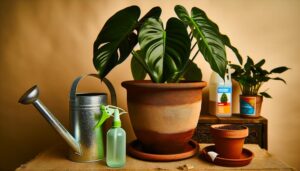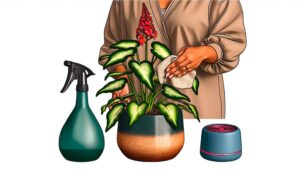How Do I Care for a Philodendron Little Hope? Expert Tips!
Philodendron Little Hope thrives in certain conditions. To start, position it in a space with indirect, medium to bright light.
Next, keep relative humidity between 40-60% and only water when the top 1-2 inches of soil are dry. Overwatering can lead to root rot.
Use well-draining soil, rich in organic matter; a mix of peat moss and perlite works well. To end, beware of pests like mealybugs, aphids, and spider mites.
Appropriate care is necessary to maintain a healthy plant. For a detailed guide on soil selection and pest prevention, continue reading this article.
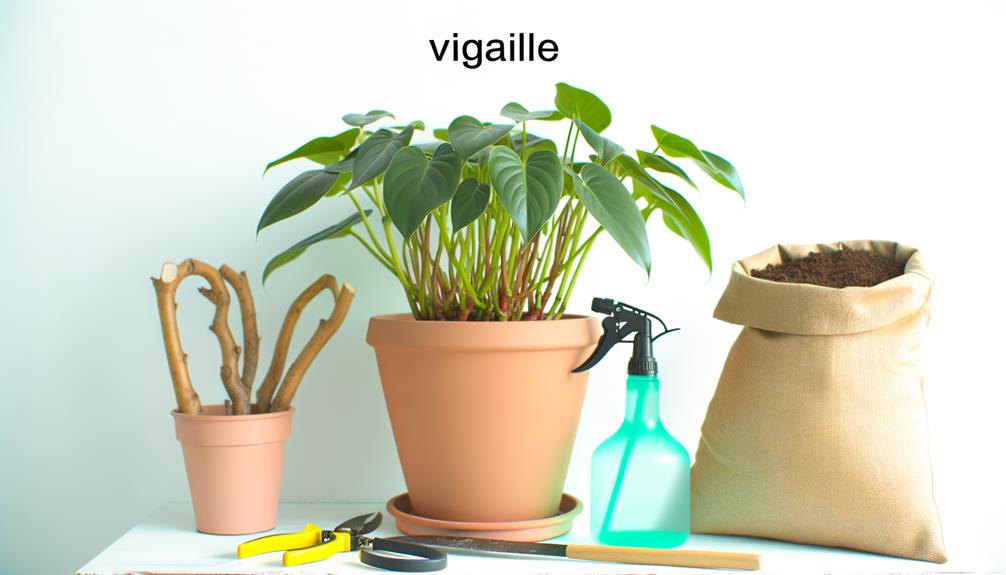
Key Takeaways
- Place your Philodendron Little Hope in indirect, medium to bright light, ideally near a north or east-facing window.
- Water the plant when the top 1-2 inches of soil is dry, typically once a week, with rain, distilled, or filtered water.
- Ensure the plant’s environment maintains a relative humidity of 40-60% to mimic its tropical origin.
- Use well-draining soil rich in organic matter, such as a mix of peat moss and perlite, with a pH between 6.0 and 7.0.
- Protect the plant from pests like mealybugs, aphids, and spider mites by regularly inspecting, physically removing pests, and using horticultural oils or insecticidal soaps.
Understanding Philodendron Little Hope

The Philodendron Little Hope, a compact variety of the popular Philodendron species, boasts an array of unique traits, thriving in indirect sunlight and requiring minimal watering, making it a favored choice amongst novice and seasoned gardeners alike.
This resilient plant possesses a tropical origin, contributing to its preference for humid environments. Its distinctive leaves, dark green and glossy, are shaped like miniature shields, adding an aesthetic appeal to its robust nature.
A well-draining potting mix, rich in organic matter, is recommended for ideal growth. Although it can withstand neglect to an extent, regular feeding with a balanced, water-soluble fertilizer during the growing season ensures a healthy, vibrant plant.
Additionally, its ability to purify indoor air makes it an asset in promoting better wellbeing.
Ideal Lighting Conditions
Best lighting conditions play a vital role in the growth and health of the Philodendron Little Hope, which thrives best under indirect, medium to bright light.
Direct sunlight, particularly intense midday sun, can cause leaf burn and overall stress to the plant, hindering its growth potential. It is recommended to position your Philodendron Little Hope in a well-lit room, avoiding direct exposure to sunlight.
Ideally, the plant should receive bright but diffused light. A north or east-facing window would typically provide these conditions. If the natural light in your space is too strong, consider using a sheer curtain to filter the light. Conversely, if the light is too low, a fluorescent light source could supplement the natural light.
Watering and Humidity Requirements
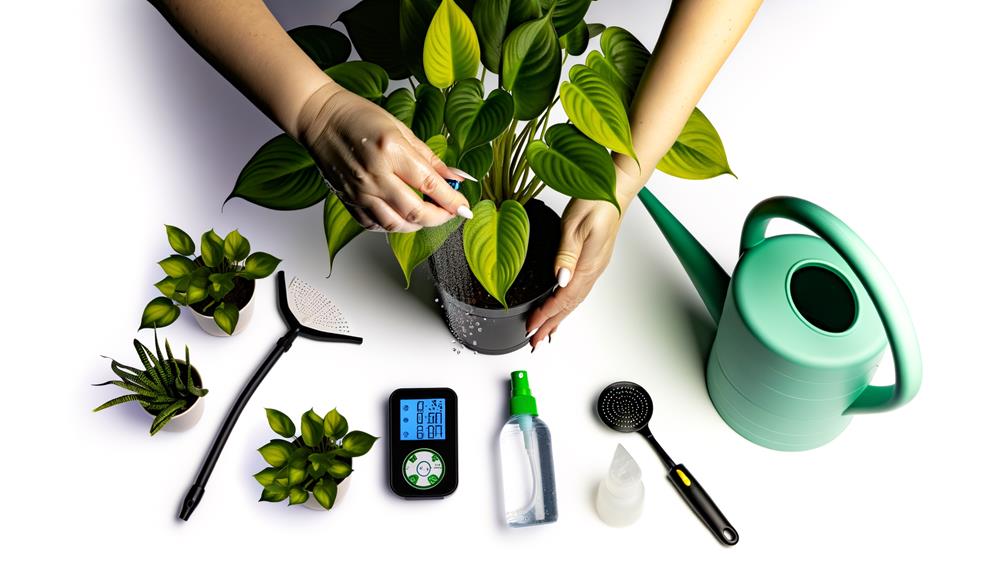
Just as lighting is crucial to the health of a Philodendron Little Hope, appropriate watering and humidity levels are equally vital to its well-being.
As a tropical plant, it thrives in humid environments. Maintaining a relative humidity level of 40-60% is recommended.
It is crucial to water the plant when its top 1-2 inches of soil becomes dry, which typically means watering once a week. However, this can vary depending on the season and environment. Overwatering can lead to root rot, a common issue amongst Philodendrons.
A moisture meter can be a valuable tool to avoid this. In addition, avoid using water with high mineral content as it can cause leaf burn. Using rain, distilled, or filtered water is preferred.
Choosing the Right Soil
Exploring the world of potting mixes, one must realize that Philodendron Little Hope, like its tropical counterparts, thrives in well-draining soil rich in organic matter.
Being an epiphytic plant, it prefers a substrate that mimics its native rainforest floor habitat. A mix of peat moss and perlite in a 1:1 ratio, supplemented with a touch of compost, provides the necessary balance of aeration, drainage, and nutrient content.
Avoid using heavy soils that can lead to waterlogging and root rot. A soil pH between 6.0 and 7.0 is ideal, promoting nutrient availability and healthy root development. A soil test kit can be useful in ensuring appropriate conditions.
Dealing With Potential Pests
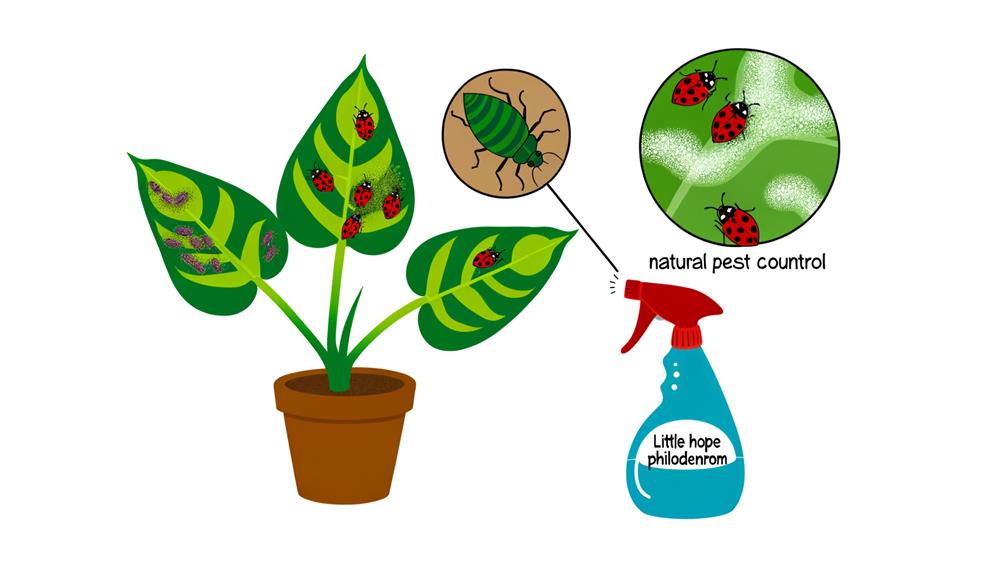
Despite meticulous care, the Philodendron Little Hope may occasionally succumb to infestations by common pests such as mealybugs, aphids, and spider mites, posing a significant threat to plant health.
To combat these pests, it is recommended to employ integrated pest management strategies. Physical removal, when feasible, can be an effective first step. For persistent infestations, consider using horticultural oils or insecticidal soaps, ensuring thorough coverage of the plant’s surface. These substances work by smothering the pests or disrupting their life cycles.
Additionally, creating an environment conducive to the plant’s natural predators, such as ladybugs and lacewings, can provide a long-term, sustainable solution. Regular inspection and prompt action are key to maintaining a pest-free Philodendron Little Hope.
Philodendron Little Hope Verzorging
Philodendron Little Hope thrives in bright, indirect light and should be kept in consistently moist but not waterlogged soil, allowing the top 2-5 cm to dry out between waterings. Ideal temperatures range from 18-27°C (65-80°F), and the plant prefers high humidity, which can be maintained by regular misting or using a humidifier.
Feed the plant every 4-6 weeks during the growing season with a diluted general houseplant fertilizer. Prune dead or damaged leaves and clean the leaves regularly to keep the plant healthy. Repot every 2-3 years into a slightly larger pot with well-draining soil.
Conclusion
To sum up, the philodendron little hope thrives under specific conditions. By providing ideal lighting, maintaining proper watering and humidity levels, choosing the right soil, and mitigating pest issues, the plant’s health can be guaranteed.
This plant’s need for detailed care mirrors the nurturing required in scientific experiments, highlighting the symbiosis between nature and science. Proper cultivation of this plant, hence, becomes a demonstration of the beauty of this interconnected relationship.


